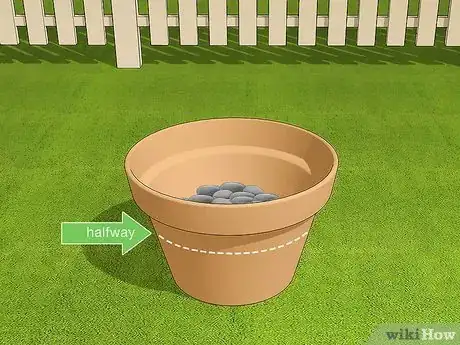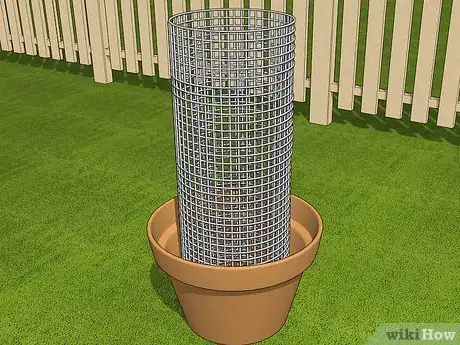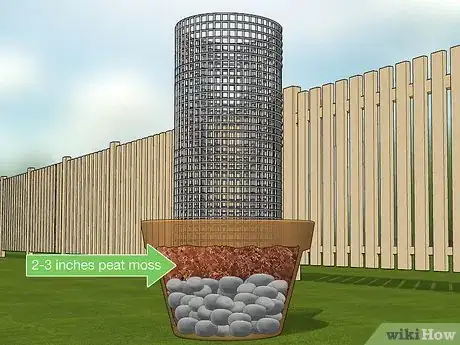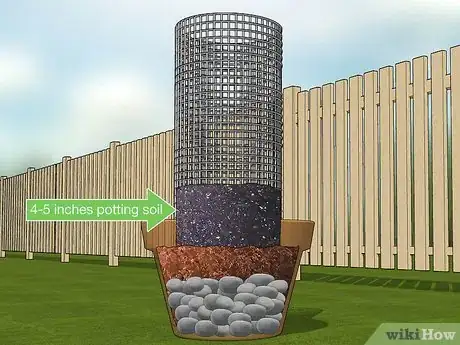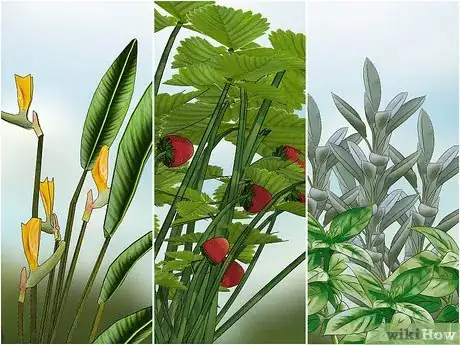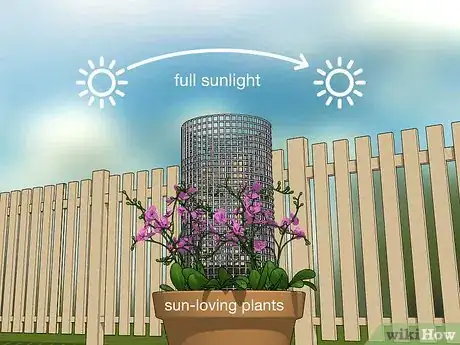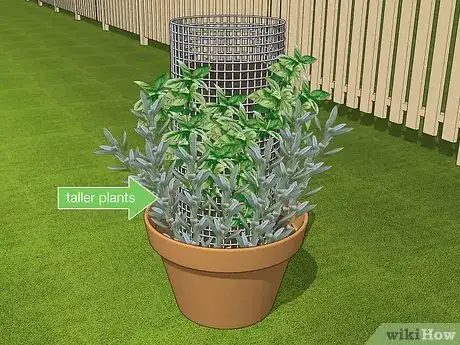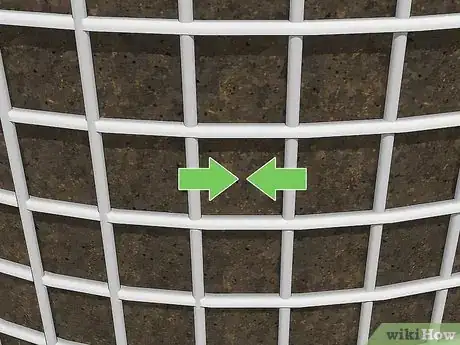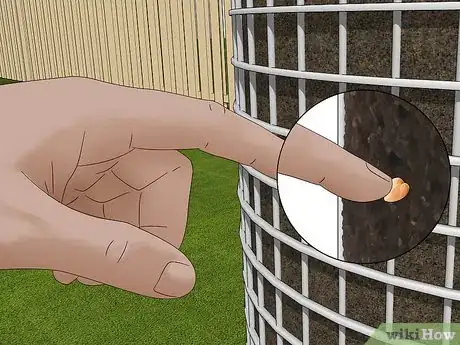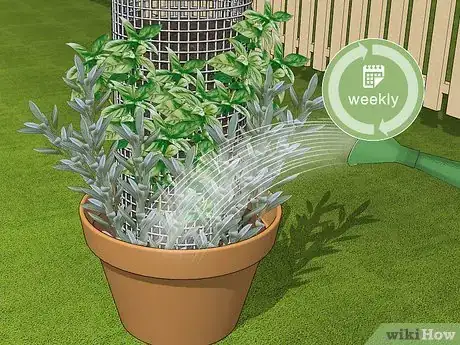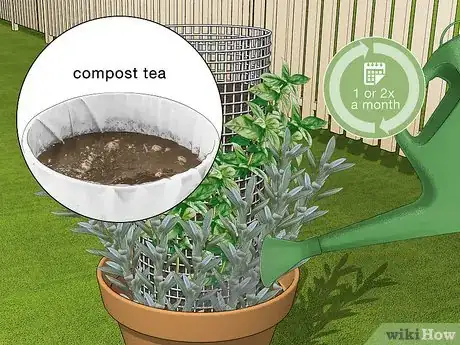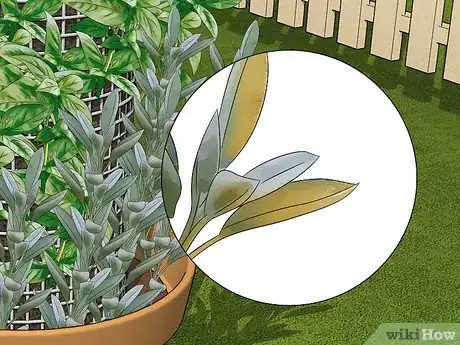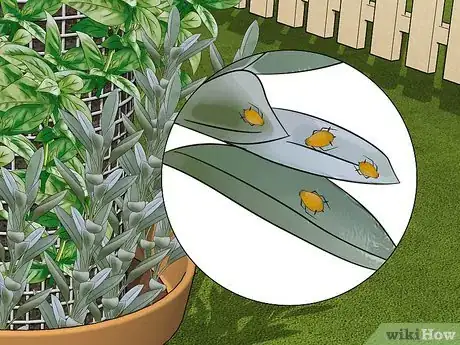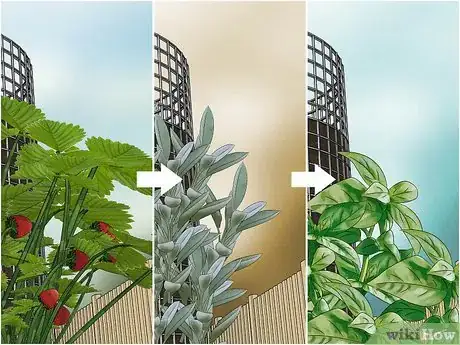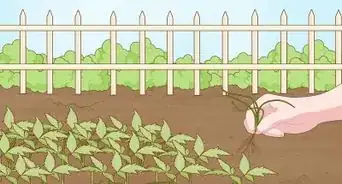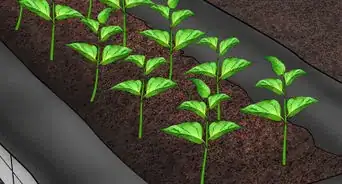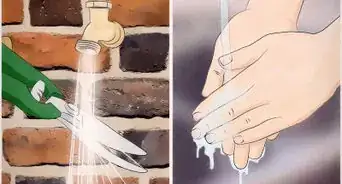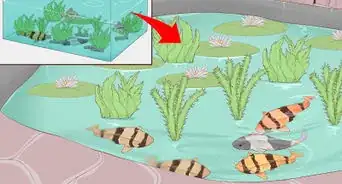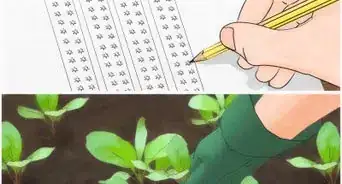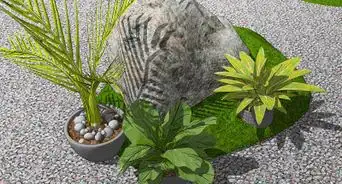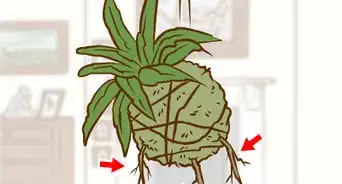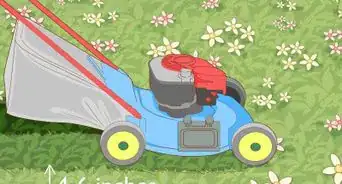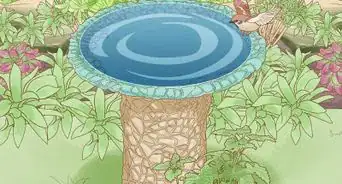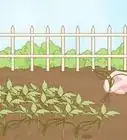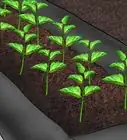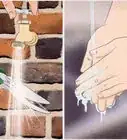This article was co-authored by Monique Capanelli. Monique Capanelli is a Plant Specialist and the Owner and Designer for Articulture Designs, an innovative design firm and boutique in Austin, Texas. With over 15 years of experience, Monique specializes in interior botanical design, living walls, event decor, and sustainable landscape design. She attended the University of Texas at Austin. Monique is a Certified Permaculture Designer. She provides plant and botanical design experiences, from small gifts to entire transformations, to shoppers as well as commercial clients including Whole Foods Market and The Four Seasons.
There are 7 references cited in this article, which can be found at the bottom of the page.
This article has been viewed 36,245 times.
Tower gardens are a great way to make every inch of your land count. if you have a small living space, you can grow herbs, flowers, and other plants in a tower garden. Use a bucket or terracotta pot to make the tower garden's base, then heighten the tower with wire mesh. Plant a variety of seeds or seedlings to diversify your garden, and take routine care of it for thriving, healthy plants.
Steps
Building Your Tower
-
1Fill a bucket or terracotta pot halfway with stones. You can gather small stones from around your yard or purchase them from a local plant nursery. Continue adding rocks until the the container is about one-third to halfway full.
- The size of your bucket or pot can vary depending on whether you grow larger or smaller plants. Your container can be as small as 16 inch (40 cm) wide pot or as large as a five gallon bucket.
-
2Insert a wire mesh cylinder lengthwise into the stones. The length ration between your container and the cylinder should be between 1:2-1:3, with the cylinder being longer. Make sure that the bottom portion of the wire mesh is completely covered by the stones. Wiggle the cylinder around to check for looseness.[1]Advertisement
-
3Add peat or sphagnum moss into the wire mesh cylinder. Moss keeps the soil moist. With peat or sphagnum moss on the bottom of your tower garden, you will not have to water as frequently. Fill the cylinder with about 2-3 inches (5-7 cm).[2]
-
4Layer potting soil on top of the peat moss. Fill the rest of the mesh cylinder with about 4-5 inches (10-13 cm) of potting soil. Layer this directly on top of the moss. Choose soils that retain moisture and nutrients, like silt or loamy soil.[3]
- You will layer more moss into the tower garden as you add plants later on.
Adding Plants
-
1Incorporate flowers, fruits, or herbs into your tower garden. A full variety of plants can grow well in a tower garden. Edible plants, like herbs or fruits/vegetables, can make your garden functional. Flowers can add aesthetic beauty to the garden alongside the more practical plants.
- Large edible plants, like tomatoes or cucumbers, need plenty of room to grow. Only plant a few larger plants at a time.
-
2Choose plants based on where you'll put your garden. Pick sun-loving plants in areas that receive light almost constantly and shade-living plants in spots with less direct sunlight. Place your tower garden in a spot that receives between six and eight hours of sunlight a day, unless you specifically plant a shade garden.
-
3Plant the tallest plants on the bottom. Think about plant size and shape as you plot out plants for your garden.Tall plants can block out the sun from smaller ones if placed on top. Check the expected sizes your plants will grow to, and organize your garden accordingly.
-
4Plant seedling roots between the wire mesh. Scout out the ideal locations for your seedlings. Place them below the seeds planted to establish a strong root system into the garden. Once your plants are secure, add more peat or sphagnum moss into the wire mesh interior.
-
5Plant seeds into the soil at an appropriate depth. Poke your seeds between the wire mesh into the soil. Check the packet your seeds came in for the appropriate depth. Avoid adding additional sphagnum moss around your seeds until the plants have time to grow.[4]
Taking Care of Tower Gardens
-
1Make sure your plants are watered at least once per week. Water your garden weekly or whenever your plants look yellowing or crisp to the touch. Once or twice a week, stick a finger into your tower garden's soil. If the soil is dry, your plants need to be watered.
-
2Water your plants with compost tea once or twice a month. Because your plants are growing in a limited space, you'll need to introduce more nutrients than usual. Every other week, use compost tea instead of your usual watering routine.
- Worm castings tea can work as an alternative.
-
3Watch for signs of disease. Take note of wilting, yellowing/browning, blighted or mildewing plants. Disease can spread quickly in close quarters, so either treat or remove infected plants before your entire garden is weakened.
-
4Check periodically for pests and weeds. For the most part, tower gardens have less trouble with invasive plants and insects. This is thanks to the limited soil space and distance from the ground. Inspect your plants once or twice a month for bugs or unidentifiable plants.[5]
- Research the pests that specifically target the plants you chose. If you're growing strawberries, for example, you might keep an eye out for aphids, crickets, and fruit flies.[6]
-
5Rotate out plants in your tower garden as desired. After you've harvested edible plants and are moving into the winter months, clean out your tower garden until you're ready to plant again next year. For the first year, try plants that involve easy maintenance (like flowers). In later seasons, move on to more complicated plants.
Expert Q&A
Did you know you can get expert answers for this article?
Unlock expert answers by supporting wikiHow
-
QuestionWhat can I plant in my tower garden?
 Monique CapanelliMonique Capanelli is a Plant Specialist and the Owner and Designer for Articulture Designs, an innovative design firm and boutique in Austin, Texas. With over 15 years of experience, Monique specializes in interior botanical design, living walls, event decor, and sustainable landscape design. She attended the University of Texas at Austin. Monique is a Certified Permaculture Designer. She provides plant and botanical design experiences, from small gifts to entire transformations, to shoppers as well as commercial clients including Whole Foods Market and The Four Seasons.
Monique CapanelliMonique Capanelli is a Plant Specialist and the Owner and Designer for Articulture Designs, an innovative design firm and boutique in Austin, Texas. With over 15 years of experience, Monique specializes in interior botanical design, living walls, event decor, and sustainable landscape design. She attended the University of Texas at Austin. Monique is a Certified Permaculture Designer. She provides plant and botanical design experiences, from small gifts to entire transformations, to shoppers as well as commercial clients including Whole Foods Market and The Four Seasons.
Plant Specialist
-
QuestionWhat type of soil do you use for a tower garden?
 Monique CapanelliMonique Capanelli is a Plant Specialist and the Owner and Designer for Articulture Designs, an innovative design firm and boutique in Austin, Texas. With over 15 years of experience, Monique specializes in interior botanical design, living walls, event decor, and sustainable landscape design. She attended the University of Texas at Austin. Monique is a Certified Permaculture Designer. She provides plant and botanical design experiences, from small gifts to entire transformations, to shoppers as well as commercial clients including Whole Foods Market and The Four Seasons.
Monique CapanelliMonique Capanelli is a Plant Specialist and the Owner and Designer for Articulture Designs, an innovative design firm and boutique in Austin, Texas. With over 15 years of experience, Monique specializes in interior botanical design, living walls, event decor, and sustainable landscape design. She attended the University of Texas at Austin. Monique is a Certified Permaculture Designer. She provides plant and botanical design experiences, from small gifts to entire transformations, to shoppers as well as commercial clients including Whole Foods Market and The Four Seasons.
Plant Specialist
Warnings
- Some plants pose dangers to humans and animals. If making your tower garden inside, take precautions to ensure that no animals or children will harm themselves by touching or ingesting the plants.⧼thumbs_response⧽
Things You'll Need
- Gardening gloves
- Bucket or terracotta pot
- Wire mesh cylinder
- Peat or sphagnum moss
- Rocks or stones
- Potting soil
- Seedlings
- Seeds
References
- ↑ http://www.ebay.com/gds/How-to-Make-a-Tower-Garden-/10000000208062530/g.html
- ↑ http://www.sunset.com/garden/backyard-projects/how-to-make-vertical-garden-tower
- ↑ http://learn.eartheasy.com/2013/06/how-to-make-the-most-of-your-soil-type/
- ↑ http://www.ebay.com.au/gds/How-to-Build-a-DIY-Garden-Tower-/10000000205128040/g.html
- ↑ http://naturehacks.com/an-introduction-to-tower-gardening/
- ↑ https://entomology.ces.ncsu.edu/strawberry-insects/
- ↑ Monique Capanelli. Plant Specialist. Expert Interview. 22 September 2020.
- ↑ Monique Capanelli. Plant Specialist. Expert Interview. 22 September 2020.
